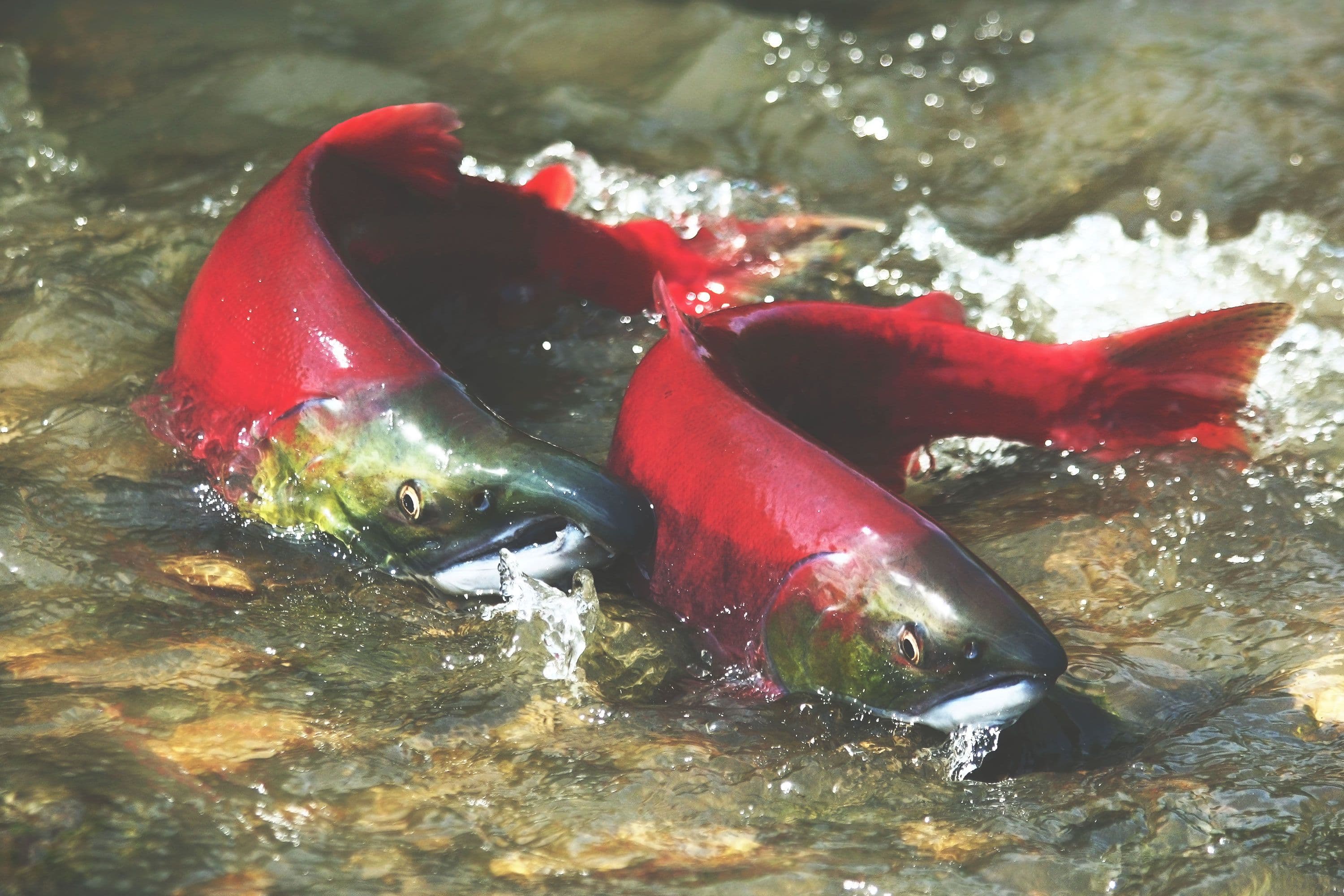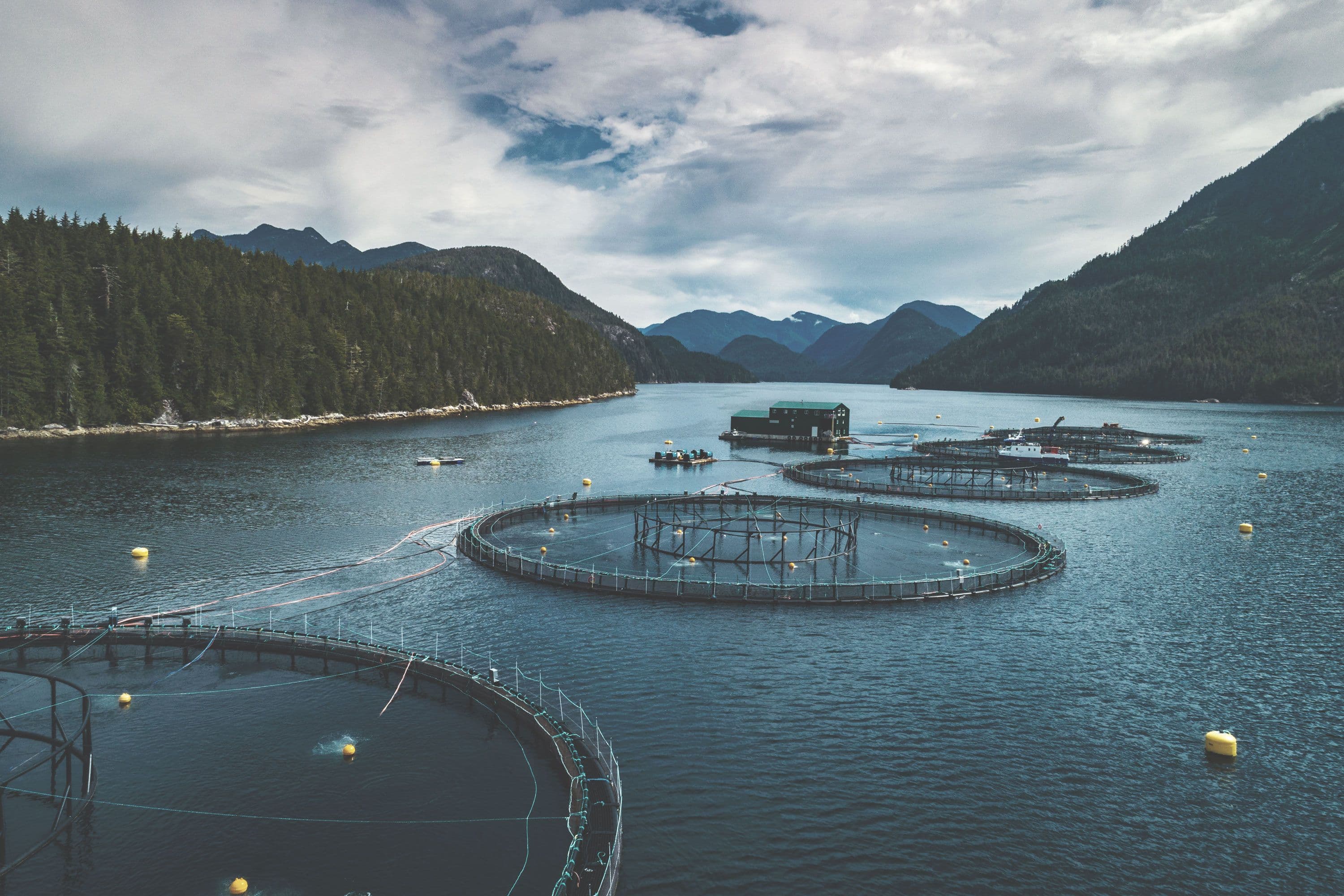
Sea lice and farmed salmon
The ocean is the natural habitat for sea lice, which are external parasites that prey on all wild fish. Sea lice have existed as long as salmon have been present in the Pacific Ocean. When we transfer our fish from our freshwater hatcheries to the ocean, they go to sea free of sea lice. It is only when lice attach to and travel with migrating wild fish that they are then transferred to farmed fish.
The risk is that the lice might multiply to high numbers on a farm and then transfer back to wild fish. A higher concentration of fish in an area (like a salmon farm) can create a higher concentration of sea lice. Environmental factors like higher water salinity and warmer ocean temperatures also add to increased populations of sea lice, which can cause health strains on juvenile wild salmon migrating through the same areas on their way to spawning grounds or the ocean.
Sea lice mitigation
Grieg BC is committed to reducing its impact on wild salmon and the environment through the reduction of not only sea lice, but interactions between farmed and wild fish. In BC, salmon farmers work together in certain regions to protect the migration of wild salmon from the impacts of sea lice on farms using area-based management like the Integrated Pest Management (IPM) strategy. This involves a multifaceted, systematic and cooperative approach to sea lice management for our Atlantic salmon farms in British Columbia.
Salmon farmers also actively engage in sea lice monitoring and removal treatments. Grieg Seafood is testing a sea lice mitigation program using the placement around the farms of tarp curtains at deeper depths (15 metres rather than 5 metres) to create a barrier near the surface-depths of the water, where sea lice are found. Our new well boat, The Ronja Islander, increases our ability to effectively apply sea lice removal options. These include the use of the simple chemical hydrogen peroxide with an innovative removal system which more quickly extracts the hydrogen peroxide; and a high-pressure sea lice filtration system that captures the removed lice and eggs (nauplii) so they are not returned to the ocean.
Information sharing
Grieg and other salmon farmers in BC are required to regularly monitor and report on sea lice levels on their farms. This data is available to the public through our website, as well as at the Department of Fisheries & Oceans (DFO). Grieg also contracts third-party biologists to monitor sea lice levels on wild juvenile Pacific salmon during their outmigration to the ocean from BC’s rivers. This data is made public and sharable to other stakeholders.
Reporting & Compliance
To see our reports on information like sea lice levels, wildlife interactions, unexplained loss, certification status and audit reports for each farm, click here.
Pesticide Permits
See below for a list of Pesticide Use Permits for sea lice mitigation:
Hecate Channel Pesticide Use Permit, Treatment Plan (No. 877-0011-23-26) Nootka Pesticide Use Permit, Treatment Plan (No. 877-0013-25-28)Clio Channel Pesticide Use Permit, Treatment Plan ( No. 877-0012-24-27)

